Collections
Most of the finds in the museum are kept in the collections that make up an indispensable naturalistic archive to go in depth about the natural environment, the changes it goes through, the species that live in it today and that lived in it before and even “Endemics”, species that only live in a limited area. The collections are a fundamental part of a museum of natural sciences, study destination and space for national and international researchers, and their value is incremented by the presence of “Typical” samples, on which, for science, the description of new species is based. In 100 years of research, conservation, recording and careful maintenance the collections of the museum have taken great significance and they got bigger in variety, quality and number of samples. Many were donated but the bigger part was formed and keeps growing in correlation to the research activities that the museum is able to do thanks to the work of the collaborating personnel and other naturalistic enthusiasts.
Earth Science
The collections dedicated to Earth Sciences have in them many finds associated with the Bergamo territory and specimens found in deposits both in and out of the country. The samples collected are grouped based on three big disciplines: mineralogy, petrography and paleontology. This last one, due to the richness of the paleontological wealth of the deposits of Bergamo, includes an under-category dedicated t fossils found in this very province. The geological collections have in them other categories of goods such as casts, models and plastics, historic topographic and geological maps and photographic archives. All together the Institute keeps in its section dedicated to the Sciences of the earth more than 9000 finds thanks to donations, collection campaigns and acquisitions. Other collections, that still have to be studied, have to be added to these catalogued collections.
Zoology
The zoological collections are made up of historical items, present since the first days of the museum, others acquired through the years as donations and others derived from the research activities done by the museum both locally and nationally. The five classes of vertebrates are well represented. For the invertebrates the arthropods collection is of great importance: it contains more than 1.000.000 objects and, inside it, particularly represented are arachnids and insects.
Ethnography
The ethnographic collections are made up of two central focuses that come from the American and African continent. The first nucleus of formation of the museum was constituted of 500 items coming from the two continents that people of different social status and formation donated to the city of Bergamo, towards which they felt affection, due to the colonial politics of the time. According to the sensitivity of the time, not much cultural significance was attributed to the finds, but instead curiosity, and the choice to put them in a science museum was dictated by the practical issue of conserving them at best, since they were made of animal skin, wood, or other degradable substances. In time the Ethnographic collections of the museum got bigger until reaching more or less 1200 items, and they have been object of studies by both Italian and foreign specialists that were able to put in light the important historical value of the items.
Sensorial spaces
You can get closer to the fascinating world of nature following a path that will give you the chance to touch and look at Zoology, Paleontology and Geology closely: animals, fossils, minerals and rocks are at your disposal to do small experiments, manipulate samples and look at them through a microscope. You can take part in fun games and stop and draw the things that impressed you the most during your visit to the museum. The captions along the pat are also in Braille for non-seeing visitors and it’s possible to get sound descriptions for an audio-guide.
Privacy Policy / Cookie Policy / Note Legali
Museo Civico di Scienze Naturali E. Caffi – Bergamo © 2022 Tutti i diritti riservati
Privacy Policy / Cookie Policy / Note Legali


